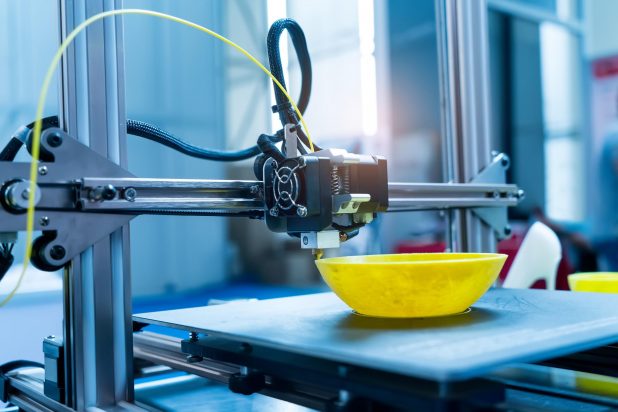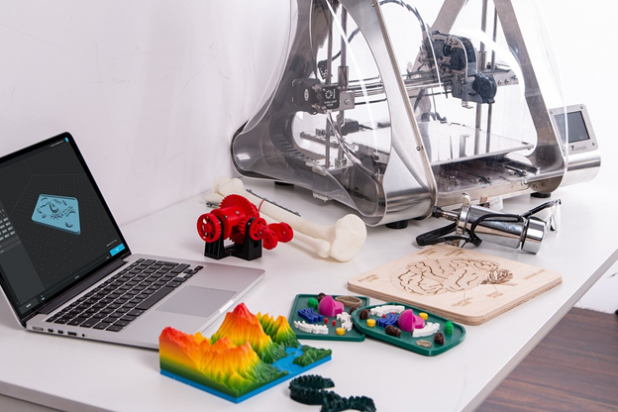Planes, prosthetic legs, and ping pong paddles. What do these all have in common? They can all be made better, cheaper, and more accurately using 3D printing.
Commercial 3D printers used to be reserved for commercial uses. But when a key patent expired in 2009, prices dropped and the industry exploded. The lower price point made the devices affordable to the public, gaining popularity. 3D printing uses and accessibility have been growing since.
The use of this technology is impacting everything from the medical field to education. Hobbyists can purchase printers for their homes for entertainment or income. The auto and housing industry has and will see changes from growing 3D printing innovations.
3D printing has made the manufacturing industry more efficient and reduced material waste. The applications of this technology are diverse and impactful.
1. A Limitless Range of Materials
From fragile to sturdy, 3D printers can work with an enormous range of materials. And the list keeps growing. With that, so does the range of items that can be printed.
The original 3D printing material, plastic is the most common to print with. Designers use different types of plastics depending on the project. Most kinds are inexpensive and readily available. Its strength and range of colors make plastics a good choice for everything from toys to mechanical parts.
Metal is popular for 3D printing everything from industrial parts to jewelry. Sterling silver and titanium are often used when strength is a priority. 3D printers have become popular in producing construction components and tools.
Printing with more delicate metals like gold and silver has changed the entire jewelry making industry. Custom jewelry is now less expensive and more accessible.
3D printers can even produce everything on your table, from the dishes to your dinner! Ceramic and glass can be used to make plates, bowls, and other dishes. Food can be 3D printed as well. Any ingredients that can be made into purees can be printed into food. Companies are working towards lowering costs and world hunger with 3D printing.
2. Astounding Medical Uses
These amazing machines are saving and changing lives! One of the best benefits of 3D printing is in the medical field. 3D printers are used to create implants for joints and bones. There are organizations that produce low cost, 3D printed prosthetic limbs. The intricate tools surgeons use in operations are often 3D printed to be more precise.
Medical and dental students see invaluable uses of 3D printed prototypes of organs. Having access to models of organs and body parts provides them with more opportunities to learn. 3D printing can print so intricately that models of fetuses can be printed for limitless practice. Having realistic, detailed models of anatomy better prepares these future doctors for practice.
3D printers will soon be able to save lives! Working organs, like hearts and lungs, are the next big feat. Scientists are working to be able to use these printed organs for transplants. The ability to print organs for research purposes will be groundbreaking!
3. Entertaining and Useful At Home

Have you considered purchasing a 3D printer for your home? Besides awesome party tricks, the uses are endless!
A quick internet search will give you a million ideas for 3D printing projects. From birdhouses and kitchen tools to furniture and sports equipment, the possibilities are infinite. Avid builders have even started printing entire houses!
3D printing can save, and even make, money! Ordinary household items you would normally purchase, like a case for your new cell phone, could simply be printed. Imagine being able to rev up your 3D printer and knock out your Christmas shopping list! Some printer owners have started selling their printed products online to supplement their income.
But which is the best printer to purchase? With the abundance of affordable options out there, the 3D printing industry now has something for everyone in every price range. From under $400 to close to $2000, there are tons of options out there!
4. Educating the Future
Move over shop class! 3D printers have found their way into classrooms across the country. Many high schools offer 3D printing classes as an elective. Teachers have found ways to reinforce lessons in other subjects using 3D printing.
Geography students can print mini land-forms and chemistry students can produce models of molecules. Engineering students can bring their ideas to life by 3D printing prototypes. The possibilities are endless in incorporating 3D printers into any subject.
These printers are changing education by motivating students and making learning more exciting! As price points continue to drop, purchasing printers becomes more accessible to schools.
5. Continued Innovation
The full, mainstream impact of 3D printing is yet to be seen. You may be driving home to your 3D printed house in your 3D printed car in the very near future. The waste reduction and efficiency of 3D printers make it possible to produce large ticket items at lower costs.
Housing is made more accessible and affordable using 3D printing. ICON built the country’s first 3D printed house. On their website, they discuss their plan for solving the housing crisis. The houses are quicker to build and at a much lower cost. Homelessness could be solved in the future by mass producing these houses.
3D printing has long been used to produce auto components. But recently, manufacturers have been experimenting with printing entire cars! Carmakers from Bentley to Toyota have developed 3D printed concept cars. Don’t head to your dealership yet, but the prototypes have the potential to hit the mainstream soon.
Some companies are thinking much bigger. Space bigger. Relativity Space is building rockets and satellites using 3D printers. Their ultimate goal is to build a factory for 3D printing rockets, on Mars!
As the products produced by the printers grow and improve, so do the printers. Manufacturers are working to make these printers even faster and more precise. This will increase efficiency and production in a wide range of industries using 3D printing.
Conclusion

3D printing has changed so many industries since its invention. And its potential is just being tapped. Innovations in 3D printing are always growing. New materials will provide even more printing options. Medicine will develop even more life-saving uses. And as a whole generation grows up with access and education, the potential of 3D printing in the future is limitless.





